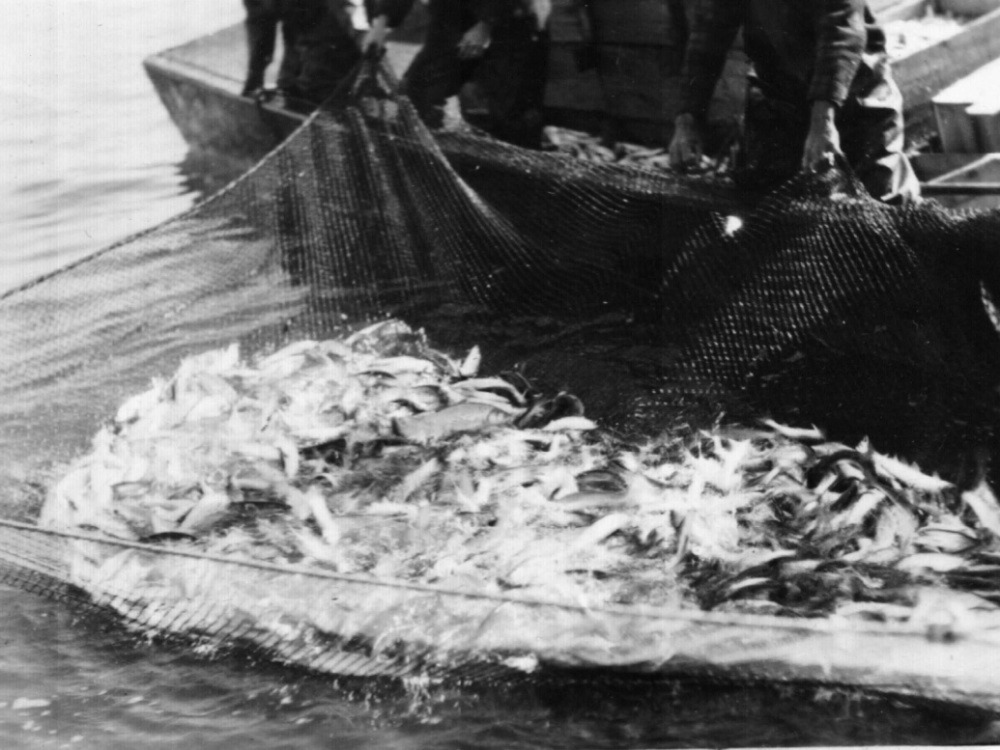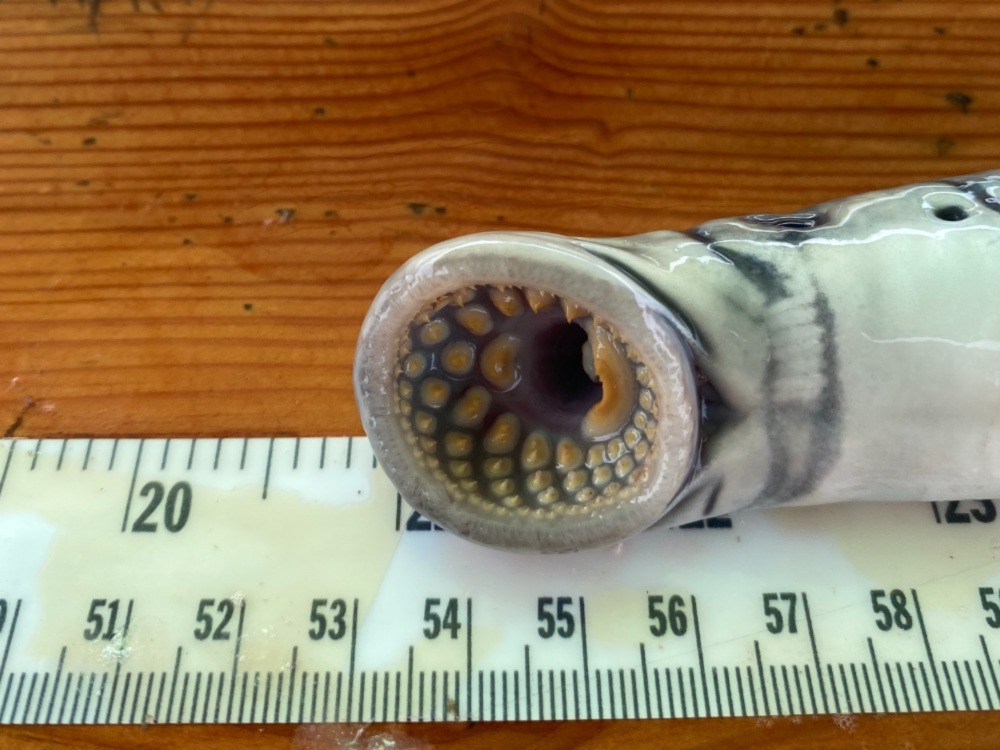What Happened to Coregonines?
All coregonines (ciscoes and whitefishes) underwent large changes in abundance over the past century or so, but the greatest loss in diversity was for the “ciscoes”, which is a common name to characterize the eight different recognized species of more pelagic oriented coregonines that once occurred in the Great Lakes. A recent synthesis reported that at least 70% of cisco diversity has been lost, and many stressors contributed to these extirpations and even extinctions.
Image Credit: US Bureau of Fisheries

Potting ciscoes caught in a pound net in Lake Huron, c. 1930s. Credit: USGS Great Lakes Science Center.
Invasive Species
Invasive species also have been hypothesized to have contributed to the decline of both ciscoes and whitefishes. For example, parasitism by invasive Sea Lamprey likely contributed a new source of mortality to already stressed populations.
Invasive planktivorous fishes (e.g., Alewife, Rainbow Smelt) also began increasing in abundance during the time when cisco diversity and abundance was declining. Some scientists have hypothesized that interactions with these species contributed to the declines, while others question their relative importance.

Mouth of an invasive sea lamprey captured in Lake Michigan. Credit: Katie Anweiler.

Spawning shoal off Drummond Island, Lake Huron. Credit: Andrew Muir.
